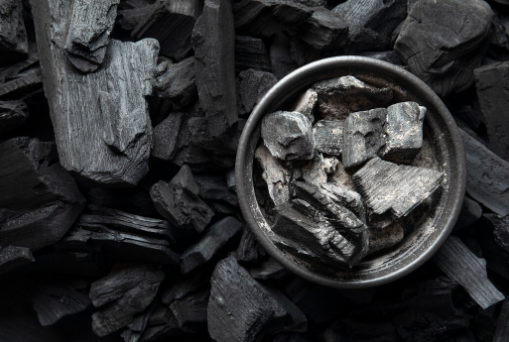As we move into 2025, the demand for smokeless coal continues to grow, driven by rising environmental awareness and stricter regulations on household and industrial emissions. Whether you’re heating your home, fueling a stove, or managing a business that relies on solid fuel, choosing the best smokeless coal can make a big difference in both performance and sustainability.
This complete buyer’s guide will help you understand what smokeless coal is, why it’s a smart choice, and how to pick the perfect type for your needs in 2025.
What Is Smokeless Coal?
Smokeless coal is a type of solid fuel that produces very little smoke when burned. Unlike traditional coal, which releases thick black smoke and high levels of carbon, smokeless coal is engineered to burn cleanly and efficiently.
It’s usually made from anthracite, ovoid briquettes, or manufactured fuels that combine carbonized materials with binding agents. The result is a dense, slow-burning fuel that emits minimal smoke and ash, making it ideal for open fires, multi-fuel stoves, and boilers.
Why Choose Smokeless Coal in 2025?
The benefits of smokeless coal go beyond cleaner air. Here’s why it’s become the top choice for many households and businesses in 2025:
1. Eco-Friendly Heating
With environmental regulations tightening across the UK and Europe, smokeless coal meets low-emission standards. It produces up to 80% less smoke and 40% less carbon dioxide compared to traditional house coal.
2. High Heat Output
Smokeless coal offers a longer and hotter burn. This means more warmth with less fuel — a major advantage for cost-conscious users. Many top brands now boast up to 9kWh per kilogram of heat energy.
3. Long Burn Time
Smokeless fuels are known for their slow, consistent burn, which means fewer refuels and greater convenience during cold nights.
4. Versatility
It can be used in open fires, stoves, and cookers, and some varieties are even suitable for boilers or gravity-fed systems.
5. Cleaner Chimneys and Flues
Because it produces minimal soot and ash, smokeless coal helps keep your chimney clean, reducing the risk of blockages and costly maintenance.
How Smokeless Coal Differs from Traditional Coal
The key difference lies in the manufacturing process and composition. Traditional coal is mined and used in its natural form, whereas smokeless coal is processed to remove volatile compounds responsible for thick smoke.
| Feature | Smokeless Coal | Traditional Coal |
|---|---|---|
| Smoke Emissions | Very Low | High |
| Heat Output | Higher | Moderate |
| Burn Time | Longer | Shorter |
| Environmental Impact | Low | High |
| Cost Efficiency | Excellent | Moderate |
| Chimney Residue | Minimal | Heavy Soot |
This difference makes smokeless coal the superior choice for modern heating systems and eco-conscious consumers.
Types of Smokeless Coal Available in 2025
Understanding the different types of smokeless coal helps you choose the one best suited for your specific heating needs.
1. Anthracite
Anthracite is a naturally occurring hard coal with a very high carbon content — usually above 90%. It burns slowly with a bright blue flame and offers one of the highest heat outputs of all smokeless fuels.
Best for: Stoves, cookers, and closed appliances.
Advantages: High heat, low ash, long burn time.
2. Ovoids or Smokeless Briquettes
These are manufactured oval-shaped fuel pieces, made from crushed anthracite and binding agents. They are engineered for consistent size and performance.
Best for: Open fires and multi-fuel stoves.
Advantages: Easy to light, even burn, low smoke, and minimal ash.
3. Ecoal (Manufactured Eco Fuels)
Ecoals are a modern innovation — a blend of biomass and renewable materials with smokeless properties. They are designed to have reduced carbon footprints while maintaining strong heat output.
Best for: Eco-friendly households.
Advantages: Carbon-neutral or low-carbon, high efficiency, renewable origin.
4. Homefire Ovals
A popular brand-specific type, these smokeless ovoids are known for long-lasting heat and low ash production. They are easy to handle and ideal for everyday domestic heating.
Best for: Open fires and glass-fronted stoves.
Advantages: Extended burn, steady warmth, low residue.
5. Phurnacite
A premium-grade smokeless fuel, Phurnacite is made from compressed anthracite and is often used in boilers and cookers. It burns extremely hot and clean.
Best for: Cookers and central heating systems.
Advantages: High heat, reliable performance, minimal maintenance.
Factors to Consider When Buying Smokeless Coal
When shopping for smokeless coal in 2025, it’s not just about picking a brand. Here are the most important factors to weigh before making your purchase.
1. Appliance Compatibility
Not all smokeless coals are suitable for every appliance. For example:
-
Open fires: Choose easy-light briquettes or ovoids.
-
Stoves: Opt for anthracite or long-burning ovoids.
-
Boilers or cookers: Go for high-grade fuels like Phurnacite.
Always check your appliance manufacturer’s guidelines for compatible fuel types.
2. Heat Output
Heat output is measured in kilowatt-hours (kWh). Higher kWh means more energy per kilogram of coal. For example:
-
Standard ovoids: 8kWh/kg
-
Anthracite: Up to 9kWh/kg
-
Ecoal: Around 7.5–8.5kWh/kg
If you live in a cold climate, investing in higher-output coal will save you money in the long run.
3. Burn Duration
A key advantage of smokeless coal is its slow burn. Longer-burning fuels reduce refueling frequency, which is especially convenient overnight. Check product reviews or manufacturer data for burn time estimates.
4. Ash Content
Less ash means less cleaning. Premium smokeless coals typically leave behind less than 2% ash, while cheaper versions may leave more. If you prefer minimal maintenance, opt for a high-quality brand.
5. Ease of Ignition
Some smokeless coals can be harder to light than traditional house coal. Look for products labeled “easy light” or “quick start” if convenience matters.
6. Environmental Impact
In 2025, sustainability plays a major role in consumer choices. Many modern smokeless coals now include renewable ingredients like olive stones, sawdust, or biomass blends to reduce carbon emissions.
7. Price vs. Value
While smokeless coal is slightly more expensive upfront, its longer burn and higher efficiency mean you use less over time. Always calculate the cost per burn hour, not just the price per bag.
Storage and Handling Tips
Proper storage keeps your smokeless coal dry and effective. Here’s how to do it:
-
Keep it dry: Store in a waterproof bin or coal bunker to prevent moisture absorption.
-
Ventilation: Allow airflow to prevent condensation.
-
Avoid direct ground contact: Use a pallet or mat to keep bags off damp floors.
-
Rotate stock: Use older coal first to maintain freshness and burn quality.
Top Benefits of Smokeless Coal in 2025
-
Eco-compliance: Meets all 2025 clean air standards.
-
Energy efficiency: Burns longer and hotter than traditional coal.
-
Low maintenance: Minimal ash and soot mean fewer cleanings.
-
Cost-effective: Despite higher upfront cost, you use less overall.
-
Safe and convenient: Suitable for smoke control areas.
-
Modern innovation: Many brands now use eco-friendly materials.
How to Identify Quality Smokeless Coal
Not all products labeled “smokeless” are created equal. Here’s how to tell you’re getting top-quality fuel:
-
Consistent shape and size: Indicates uniform burning.
-
Low moisture content: Ensures easy ignition and steady heat.
-
Minimal smoke during lighting: True smokeless coal emits almost no smoke after ignition.
-
Trusted brands: Look for well-known names that meet DEFRA or government clean air standards.
-
Positive reviews: User experiences often reveal real-world burn quality.
Common Myths About Smokeless Coal
Myth 1: Smokeless Coal Is Hard to Light
Modern smokeless fuels have improved drastically. Many now feature added ignition aids, making them almost as easy to light as wood.
Myth 2: It’s Not as Warm as Traditional Coal
False — in fact, smokeless coal produces more heat per kilogram than standard house coal due to its dense composition.
Myth 3: It’s Only for Stoves
While stoves benefit greatly from smokeless fuels, most types are perfectly suitable for open fires and boilers too.
Myth 4: It’s Too Expensive
Although the price per bag may be higher, the longer burn time and efficiency make smokeless coal more cost-effective in the long term.
Future Trends: The Evolution of Smokeless Coal in 2025 and Beyond
As environmental innovation continues, the smokeless coal market is evolving rapidly:
-
Biomass integration: Blends using renewable sources like nutshells or agricultural waste.
-
Carbon-neutral fuels: Manufacturers are working toward net-zero solid fuels by 2030.
-
Smart heating compatibility: Some new systems automatically adjust airflow for optimal burning.
-
Improved packaging: Eco-friendly, recyclable bags are now standard among premium brands.
In 2025, choosing the right smokeless coal isn’t just about heat — it’s about contributing to a sustainable energy future.
Conclusion
Choosing the best smokeless coal in 2025 comes down to balancing performance, cost, and environmental responsibility. With so many improved options available — from high-grade anthracite to eco-friendly ovoids — you can enjoy powerful, efficient heat without compromising on sustainability.
When buying smokeless coal, consider your heating appliance, desired burn time, and eco goals. Always look for reliable, certified brands that promise clean burning and consistent heat. Proper storage and handling will also ensure you get the most from every bag.
Smokeless coal has become the gold standard for modern heating — efficient, clean, and future-ready. By making the right choice, you not only enjoy warmth and comfort but also play your part in building a cleaner, greener planet.



